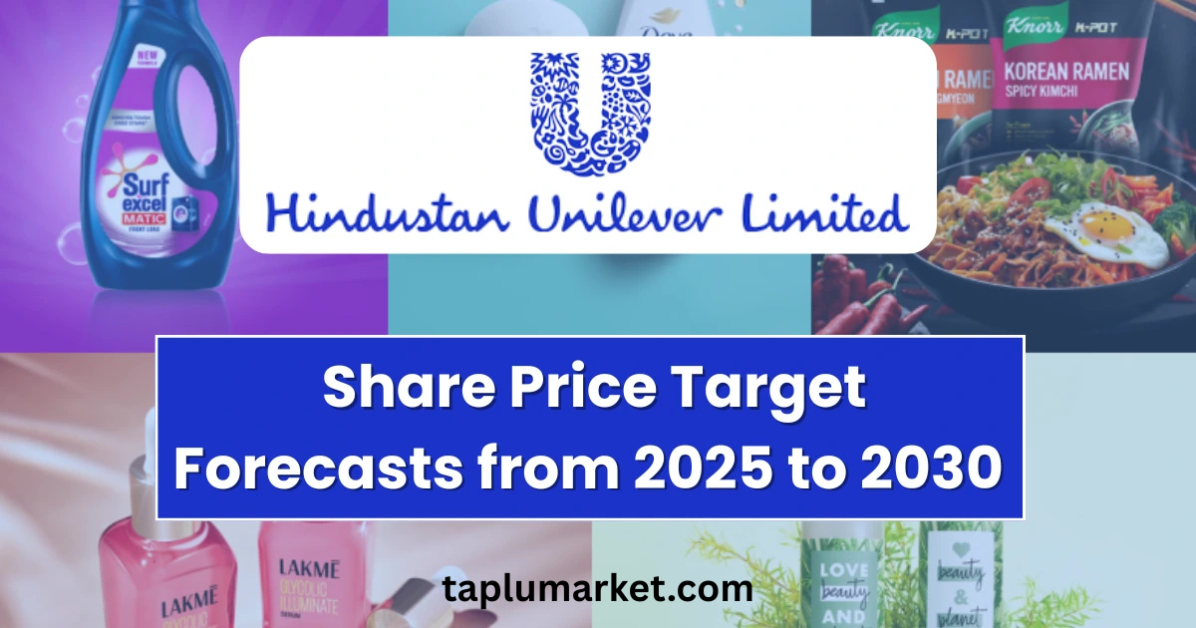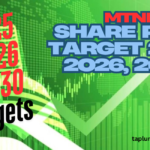Hindustan Unilever Limited (HUL) is India’s leading Fast-Moving Consumer Goods (FMCG) company, with a dominant market presence across categories like personal care, home care, and food & beverages. Known for iconic brands such as Dove, Surf Excel, Lux, and Brooke Bond, HUL has consistently delivered strong financial performance, making it a blue-chip stock in the Indian market. As a subsidiary of Unilever, it benefits from global expertise while catering to India’s vast consumer base.
Investors are keenly watching HUL Share Price Target 2025-2030 long-term growth potential due to its resilient business model, strong distribution network, and ability to adapt to changing consumer trends. With India’s rising disposable income, urbanisation, and increasing demand for premium products, HUL is well-positioned to capitalise on these trends. Additionally, its focus on sustainability, digital transformation, and cost efficiency makes it a preferred choice for long-term investors seeking stability and steady returns.
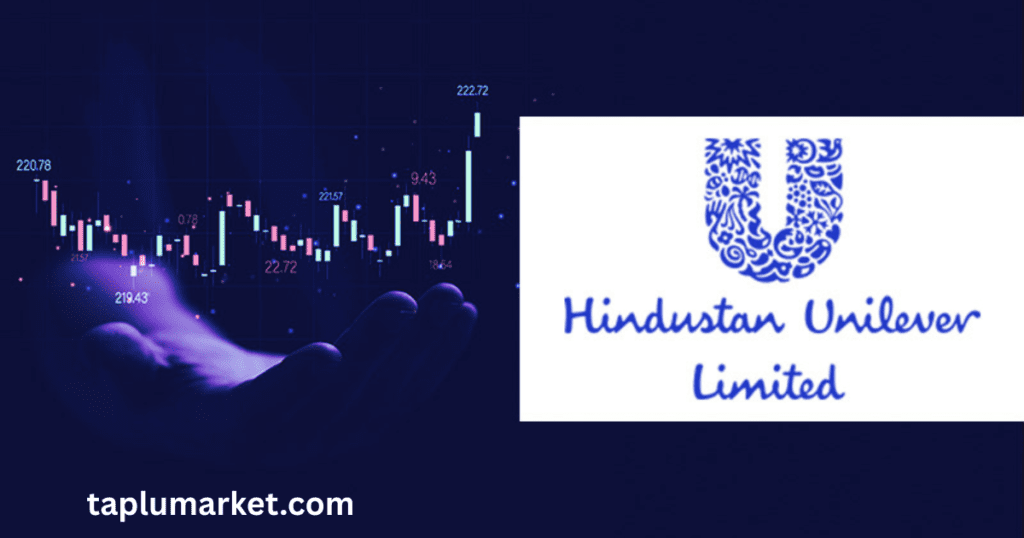
The purpose of this article is to provide a data-driven analysis of HUL Share Price Target 2025-2030, helping investors make informed decisions. We’ll explore key growth drivers, risks, expert forecasts, and investment strategies to assess whether HUL is a worthwhile addition to your portfolio over the next decade.
HUL’s Historical Stock Performance: A Decade of Growth & Resilience
Hindustan Unilever Limited (HUL) has been one of the most consistent performers in the Indian stock market, delivering steady returns with lower volatility compared to many peers. Let’s analyze its price trends over the past decade and the key factors that shaped its performance.
HUL Share Price Trends (2014-2024)
| Year | Key Price Levels (Approx.) | Major Events & Trends |
|---|---|---|
| 2014 | ₹600 – ₹700 | Stable growth, expansion in rural markets |
| 2016 | ₹800 – ₹900 | Demonetization impact (short-term dip) |
| 2018 | ₹1,400 – ₹1,600 | GST implementation, cost optimization |
| 2020 | ₹2,000 – ₹2,400 | COVID-19 surge (increased demand for essentials) |
| 2022 | ₹2,100 – ₹2,600 | Inflation pressures, input cost rise |
| 2024 | ₹2,400 – ₹2,800 | Recovery in margins, premiumization push |
Key Factors Influencing HUL’s Historical Performance
- FMCG Demand & Rural-Urban Dynamics
- Rural demand fluctuations (monsoon impact, income levels).
- Urban premiumization (shift towards high-margin products like skincare & health foods).
- Economic Cycles & Policy Changes
- GST rollout (2017) – Initially disrupted supply chains but later improved efficiency.
- COVID-19 (2020-21) – Boosted sales of hygiene and essential products.
- Inflation (2022-23) – Squeezed margins due to rising raw material costs.
- Competitive Landscape
- Rivalry with ITC, Nestlé, Dabur – Pricing wars and innovation battles.
- Private label growth – Threat from D2C and e-commerce brands.
- Company-Specific Strategies
- Acquisitions (e.g., GSK Consumer Healthcare) – Expanded portfolio into health & wellness.
- Cost-cutting & digitization – Improved supply chain efficiency.
Key Factors Influencing HUL Share Price (2025-2030): What Will Drive Growth?
Read More:- Havells Share Price
Hindustan Unilever Limited (HUL) has been a market leader in India’s FMCG sector, but its future stock performance will depend on multiple internal and external factors. Here’s a detailed breakdown of what could shape HUL Share Price Target 2025-2030:
1. Macroeconomic Factors
Inflation & Interest Rates
- Rising inflation impacts input costs (palm oil, packaging, chemicals).
- High interest rates may reduce consumer spending on non-essential FMCG products.
GDP Growth & Disposable Income
- India’s GDP growth (expected ~6-7% annually) could boost FMCG demand.
- Rising middle-class income may increase premium product sales (skincare, organic foods).
Consumer Spending Trends
- Post-pandemic, health & hygiene products remain in demand.
- Rural vs urban spending gap could narrow if farm incomes improve.
2. Industry Trends (FMCG Sector Growth)
Competition & Market Share
- Rivalry with ITC, Nestlé, Dabur, Patanjali intensifies.
- Threat from D2C (Direct-to-Consumer) brands in personal care & wellness.
Rural vs Urban Demand
- Rural markets (~35% of sales) depend on monsoon, MSP hikes, and government schemes.
- Urban premiumization trend (luxury skincare, organic foods) may drive margins.
E-commerce & Modern Trade Expansion
- Online FMCG sales growing at ~25% CAGR – HUL must strengthen digital presence.
3. Company-Specific Growth Drivers
Revenue & Profit Margins
- Historical revenue growth: ~10-12% CAGR – Can HUL sustain this?
- Margin pressures from inflation – cost optimization will be key.
Expansion Strategies
- New product launches (Ayurveda, plant-based foods, premium beauty).
- Acquisitions (like GSK Consumer Healthcare) to enter high-growth categories.
- Export potential – Can HUL leverage ‘Make in India’ for global markets?
Dividend Policy & Shareholder Returns
- HUL has a strong dividend history (payout ratio ~80-90%).
- Consistent buybacks & bonus issues could support stock price.
4. Regulatory & Global Risks
Government Policies
- GST changes, PLI schemes for local manufacturing.
- Environmental regulations (plastic waste, water usage).
Raw Material Price Volatility
- Palm oil, crude derivatives, and tea/coffee prices impact profitability.
ESG (Environmental, Social, Governance) Focus
- Investors favor sustainable brands – HUL’s “Sustainable Living” plan critical.
- Carbon neutrality, plastic reduction, and fair trade practices matter.
HUL Share Price Target 2025-2030: Year-by-Year Forecast & Analysis
Read More:- Titan Share Price Target
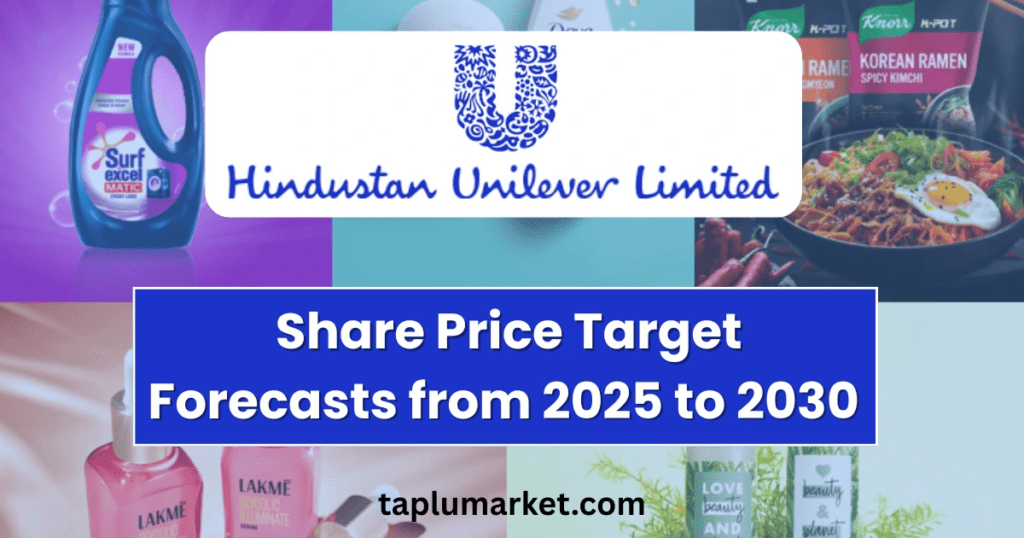
Investors looking for long-term FMCG stocks often consider Hindustan Unilever (HUL) for its stability and growth potential. Below is a detailed, data-backed forecast for HUL Share Price Target 2025-2030, including bull/bear scenarios, sector trends, and expert insights.
HUL Share Price Projections (2025-2030)
| Year | Base Case Target | Bull Case Scenario | Bear Case Scenario | Key Growth Drivers |
|---|---|---|---|---|
| 2025 | ₹2,800 – ₹3,100 | ₹3,300+ (Strong rural recovery) | ₹2,500 (High inflation persists) | – Rural demand revival – Margin improvement – New product launches |
| 2026 | ₹3,200 – ₹3,500 | ₹3,800 (Premiumization boost) | ₹2,900 (Commodity price spike) | – E-commerce expansion – Market share gains – Stable input costs |
| 2027 | ₹3,600 – ₹4,000 | ₹4,500 (Acquisition-led growth) | ₹3,200 (Economic slowdown) | – Health & wellness focus – Export growth – Cost efficiency |
| 2028-2030 | ₹4,200 – ₹5,500 | ₹6,000+ (Market dominance) | ₹3,800 (Regulatory risks) | – 10-12% revenue CAGR – ESG leadership – Digital transformation |
Supporting Data & Analysis
1. 2025: Short-Term Outlook
- Bull Case (₹3,300+): Rural demand recovery, lower inflation, successful premium launches.
- Bear Case (₹2,500): Prolonged inflation, weak monsoon, competitive pressure.
2. 2026-2027: Mid-Term Growth
- Expected CAGR of 10-12%, driven by:
- Premiumization (luxury skincare, health foods).
- Acquisitions in high-growth segments (like GSK deal).
- Cost control (supply chain digitization).
3. 2028-2030: Long-Term Potential
- ₹5,000+ possible if HUL maintains:
- 12%+ revenue CAGR (historical average).
- Rural + urban balance in sales.
- Global FMCG trends (sustainability, D2C growth).
Peer Comparison (HUL vs Competitors)
| Metric | HUL | ITC | Nestlé India | Dabur |
|---|---|---|---|---|
| 5-Yr CAGR (%) | ~12% | ~9% | ~15% | ~10% |
| Dividend Yield (2024) | 1.8% | 3.2% | 1.2% | 1.5% |
| P/E Ratio (2024) | ~60x | ~25x | ~80x | ~50x |
Risks & Challenges for HUL Stock: What Could Limit Growth?
While Hindustan Unilever (HUL) is a blue-chip FMCG stock, investors must consider these key risks and challenges before investing for 2025-2030.
1. Major Risks for HUL (2025-2030)
| Risk Factor | Impact on HUL | Mitigation Strategy |
|---|---|---|
| Intense Competition (Dabur, ITC, Nestlé, Patanjali, D2C brands) | – Price wars → Lower margins – Market share erosion | – Innovation in premium segments – Strengthening rural distribution |
| Commodity Price Volatility (Palm oil, crude derivatives, tea, packaging) | – Input cost inflation → Margin pressure | – Hedging strategies – Cost optimization programs |
| Changing Consumer Preferences (Shift to organic, Ayurveda, D2C brands) | – Legacy brands may lose relevance | – Acquisitions (e.g., GSK) – Faster product launches |
| Regulatory Hurdles (Plastic bans, higher GST, ESG compliance) | – Increased compliance costs – Supply chain disruptions | – Sustainable packaging initiatives – Govt. policy lobbying |
| Rural Demand Slowdown (Weak monsoon, low farm incomes) | – 35% sales depend on rural markets | – Affordable small packs – Govt. scheme benefits |
2. Expert Opinions & Analyst Recommendations
What Top Analysts Say (2024 Ratings)
| Brokerage Firm | Rating | Target Price | Key Remarks |
|---|---|---|---|
| Morgan Stanley | Overweight | ₹3,200 | “HUL best placed in FMCG, but rural recovery crucial.” |
| Goldman Sachs | Neutral | ₹2,850 | “Near-term margin pressures due to inflation.” |
| JP Morgan | Buy | ₹3,400 | “Premiumization & digital growth will drive stock.” |
| CLSA | Underperform | ₹2,600 | “Valuations rich vs peers; prefer ITC.” |
✅ Consensus Outlook:
- 12/20 analysts recommend “Buy” (60% positive).
- Average target price: ₹3,100 (~15% upside from current levels).
Institutional Investor Activity
- FIIs hold ~14% (stable inflow in 2024).
- DIIs increasing stake (long-term confidence).
Should You Invest in HUL for the Long Term (2025-2030)? A Balanced Analysis
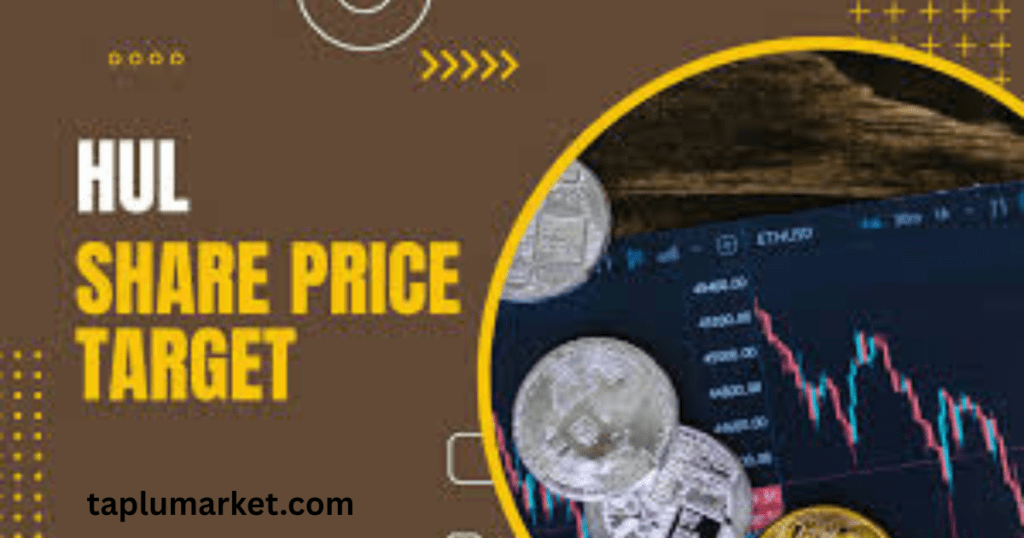
Hindustan Unilever (HUL) has been a top-performing FMCG stock for decades, but is it still a worthwhile investment for 2025-2030? Let’s break down the pros, cons, and ideal investor profile to help you decide.
✅ Pros: Why HUL Could Be a Good Investment
1. Stable Dividends (Ideal for Passive Income)
- Consistent dividend payer (80-90% payout ratio).
- Dividend yield ~1.5-2% (lower than ITC but more reliable).
2. Strong Brand Power & Market Leadership
- Owns 25+ powerhouse brands (Dove, Surf Excel, Brooke Bond).
- #1 or #2 market share in most categories (soaps, detergents, tea).
3. Defensive Stock (Safe During Market Volatility)
- FMCG = Essential products → Demand remains stable in recessions.
- Low beta (~0.6) → Less volatile than Nifty 50.
4. Growth Levers (Premiumization, Rural Recovery, Acquisitions)
- Premium skincare & health foods (higher margins).
- Rural demand rebound could boost volumes.
- Strategic buys (like GSK) expand into high-growth niches.
⚠️ Cons: Potential Drawbacks
1. Slower Growth vs. High-Beta Sectors
- Revenue CAGR ~10-12% (vs. 20%+ in IT, EVs, renewables).
- Not a multibagger – Better for wealth preservation than rapid gains.
2. Margin Pressures (Commodity Costs, Competition)
- Palm oil, packaging, chemicals inflation hurts profitability.
- Patanjali, D2C brands eating into market share.
3. Rich Valuations (P/E ~60x)
- Expensive vs. peers (ITC at 25x, Nestlé at 80x).
- Limited upside if growth slows.
Conclusion:
Hindustan Unilever (HUL) remains a solid defensive stock for long-term investors, offering stability, consistent dividends, and strong brand power. While its growth may lag behind high-risk sectors, its resilience during downturns and leadership in India’s FMCG market make it a reliable choice for conservative portfolios. Key risks include commodity inflation, competition, and rich valuations, but if you seek steady returns with lower volatility, HUL Share Price Target 2025-2030.
FAQs
What will be HUL share price in 2025?
Analyst estimates for HUL share price in 2025 range from ₹2,338 (Morgan Stanley) to ₹3,100 (Motilal Oswal), depending on market trends and growth strategies.
Is HUL a multibagger stock for 2030?
HUL is unlikely to be a multibagger by 2030 due to its large market cap and mature business, but it offers steady growth with ~9% returns.
How does HUL compare to ITC/Nestlé?
- HUL vs. ITC: HUL (1.7% dividend yield) trails ITC (3.2% yield, higher volatility) in short-term returns and dividend appeal.
- HUL vs. Nestlé: HUL’s broader portfolio and larger market cap give it an edge, but Nestlé has slightly higher growth potential (4% upside).
Disclaimer:
The advice or opinions given on Taplumarket are the personal views of the expert, the brokerage firm, the website or management is not responsible for it. Before investing, please consult your financial advisor or certified expert.
